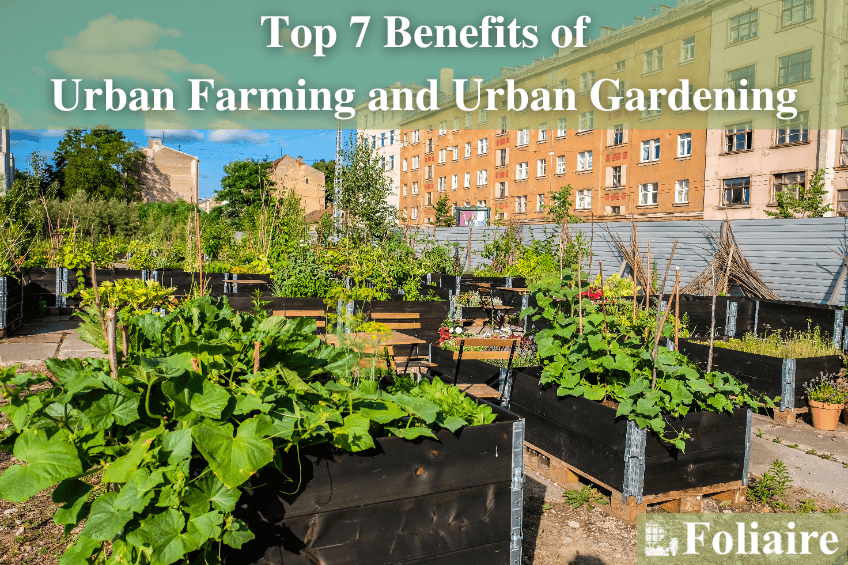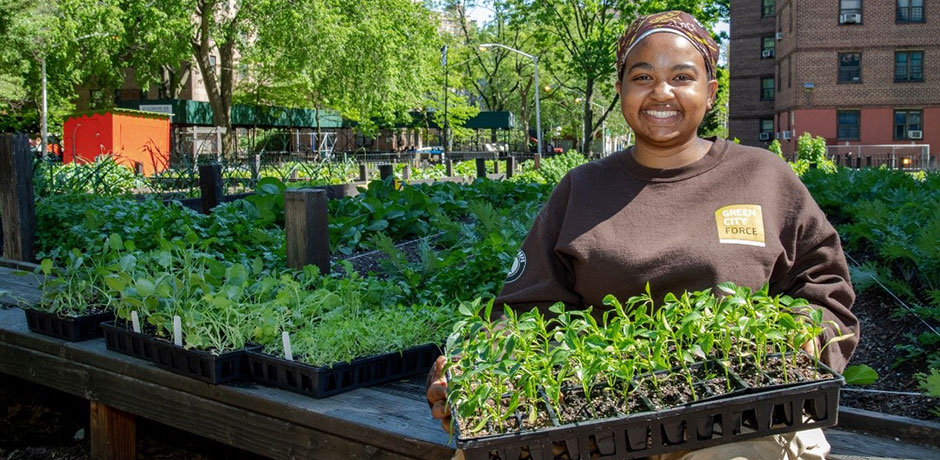All about City Blooming
The 3-Minute Rule for City Blooming
Table of ContentsThe 25-Second Trick For City BloomingEverything about City BloomingSome Ideas on City Blooming You Need To KnowMore About City BloomingFacts About City Blooming Revealed
Fascinated in growing food available in the City of Chicago? Believing regarding starting an area garden? Modifications to the Chicago Zoning Ordinance permit farming usages like neighborhood yards and city ranches in several parts of the city. Below is a checklist of regularly asked concerns relating to the guidelines and regulations that farmers must take into consideration when preparing an urban farming project.
The zoning amendment does not customize any kind of various other codes handling composting, building authorizations, purchasing or leasing City had home, company licenses or ecological contamination. There are existing codes that regulate these problems and they stay in full result and may be appropriate to your task. Area gardens are generally possessed or handled by public entities, civic companies or community-based organizations and maintained by volunteers.
Urban ranches expand food that is planned to be marketed, either on a nonprofit or for-profit basis. Because of their industrial function, city farms require an organization license. Yes. A neighborhood garden is permitted to market surplus create that was expanded on site if the sales are accessory or subservient to the yard's primary purpose defined above.
The Ultimate Guide To City Blooming
Composting is permitted however just for plant material that is produced and made use of on website. The quantity of compost product can not go beyond 25 cubic yards at any offered time according to the criteria in 7-28-715 of the City's Municipal Code. Yes. Due to the fact that the dirt at a lot of new garden sites needs amending, compost, dirt, timber chips, or various other products can be acquired to create or enhance the growing space - fruit and vegtables.

If a building permit is required then the hoophouse will be taken into consideration an accessory building. You can learn more about the building permit needs by contacting the Division of Structures. The 25,000-square-foot dimension limitation is intended to prevent a solitary neighborhood garden from dominating an offered block or diminishing the block's existing property or business personality.
The limit does not relate to gardens situated in Public Open Area (POS) districts. Can there be even more than one community yard that is 25,000 square feet on a single block? Yes. The size limit relates to specific gardens, not to specific blocks. No. Fencing is not required, nonetheless, gardens that have huge vehicle parking areas might be called for to mount fencing or various other landscaping attributes.
The Ultimate Guide To City Blooming
B1 & B2 areas need that all business usage tasks be conducted indoors. Is fencing required for urban ranches? Fencings may be required, along with landscape design and screening, for certain auto parking locations and outside work or storage space locations depending on location and the specific task taking location.
Yes. Urban ranches call for building authorizations and zoning approvals before construction. Various other types of city testimonial might be needed depending on specific frameworks, tasks, dimension, landscaping, licensing, public heath and stormwater management issues. Many of these requirements are determined in the project style or permitting procedure, nevertheless, the candidate may be accountable to independently determine details licenses or permits that may be called for.
Yes. The kind of permit is figured out by what is occurring at the site. The Division of Company Affairs and Consumer Security can assist figure out the particular sort of business certificate that's called for. Yes. Off road car parking is required for a lot of business projects in Chicago. The required number of auto parking rooms is based upon the number of staff members servicing website and not the square footage of the expanding space.
Not known Factual Statements About City Blooming

Yes. An urban ranch can market garden compost product created on website, however, the operation has to follow the guidelines in 7-28-715 of the Chicago Municipal Code. Yes. Aquaponic systems are permitted inside on urban ranches in numerous zoning areas. Nonetheless, a zoning review and structure permit is called for in order to set up structures or systems and a business permit is called for as described above.
Up to five hives or colonies of honey may be kept as an accessory usage. Nonetheless, beekeepers should sign up with the Illinois Division of Farming. To find out more about the suggested zoning amendment you might speak to the Department of Real Estate and Economic Development, Bureau of Preparation and Zoning at 312.744.8563.
Farming in cities and city areas A metropolitan ranch in Chicago. Urban farming describes numerous methods of cultivating. https://www.evernote.com/shard/s416/sh/76427f1e-db42-71c3-1e07-e8ebfa2fefe5/AF51jmfHpNcDRC9u_dl3krlbzdyP7xITRgVg4ufD6qAMWS5gU0WOhxsSWA, handling, and distributing food in urban locations. The term likewise applies to the location tasks of animal husbandry, tank farming, beekeeping, and gardening in a metropolitan context. Urban farming is distinguished from peri-urban farming, which takes area in country locations at the side of suburbs.
The Best Strategy To Use For City Blooming
, who seek to develop social networks started on a common ethos of nature and area holism. These networks can develop by means of official institutional support, coming to be integrated into local community planning as a "transition town" Visit This Link movement for lasting metropolitan advancement.
The much more straight access to fresh vegetable, fruit, and meat items that might be become aware with metropolitan farming can boost food protection and food security while reducing food miles, resulting in reduced greenhouse gas emissions, thereby contributing to environment adjustment reduction. Several of the very first evidence of city farming comes from Mesopotamia.